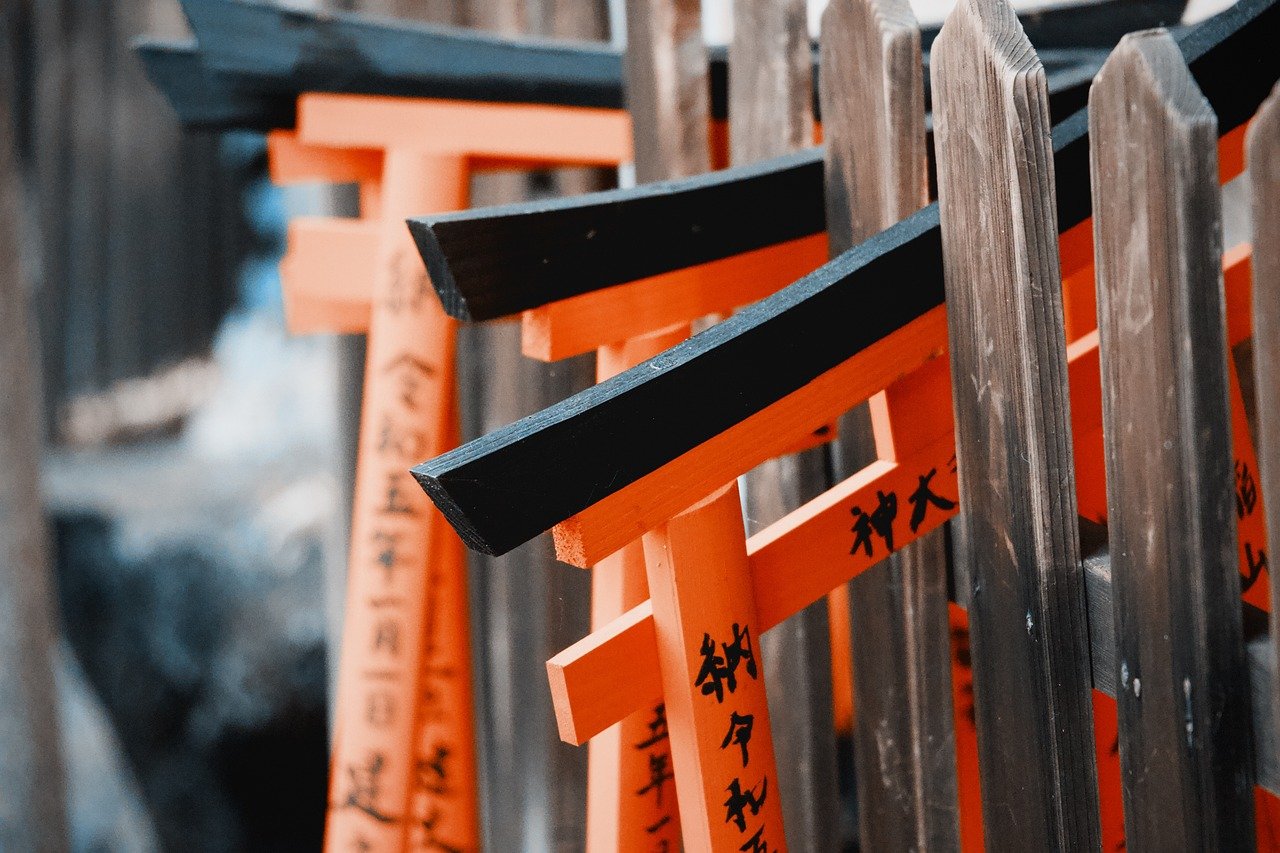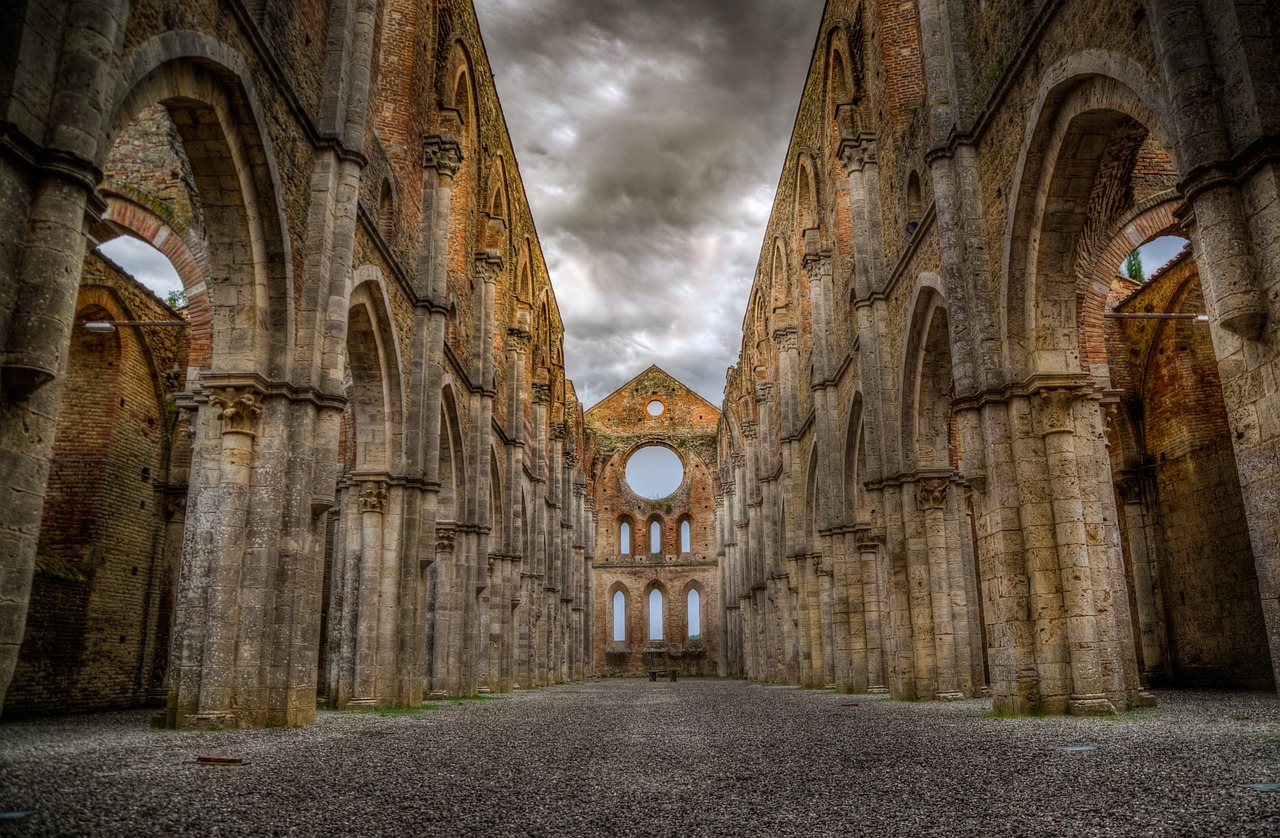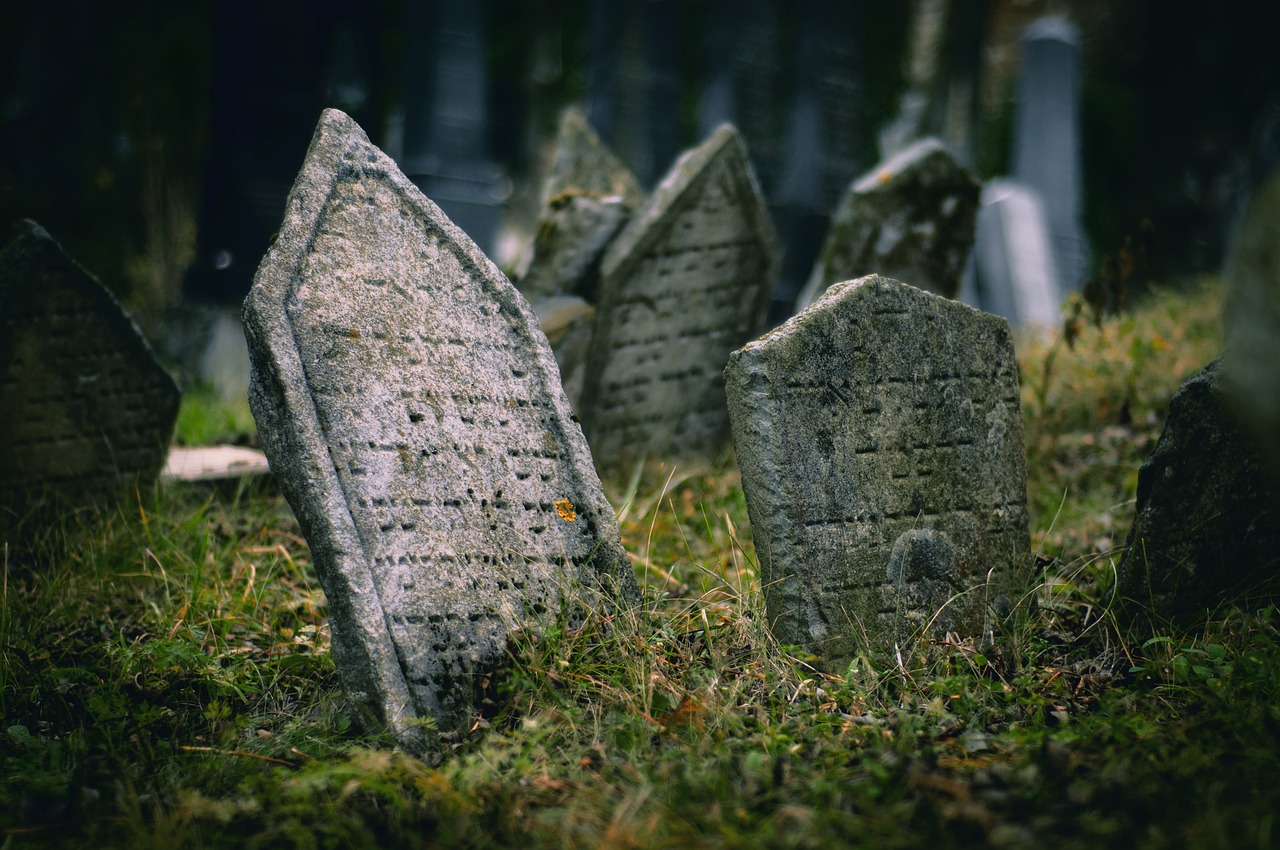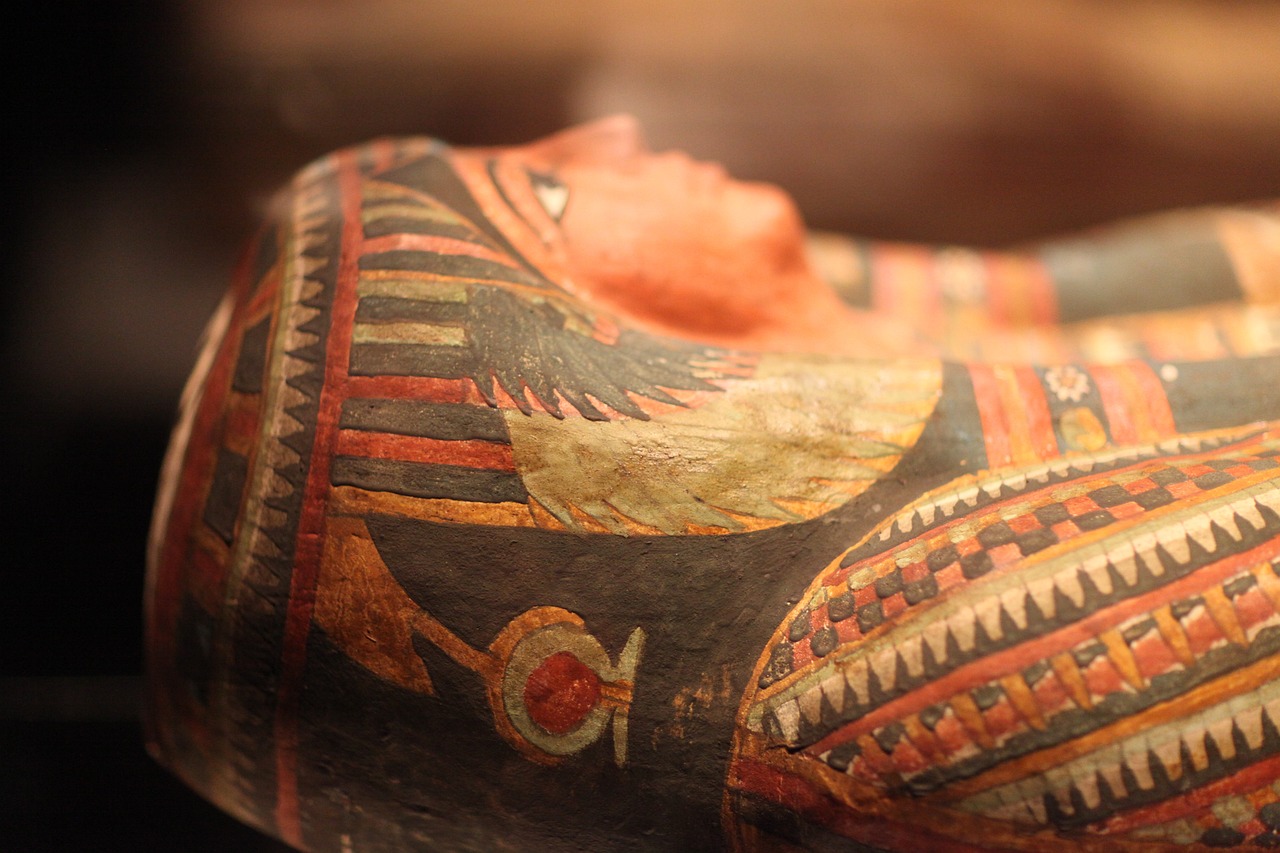The Mystery of the Kofun Tombs of Japan
Are you ready to embark on a journey through time and unravel the mysteries hidden within the ancient Kofun tombs of Japan? These enigmatic burial mounds, shaped like giant keyholes, hold secrets that have puzzled archaeologists and historians for centuries. As we delve into the depths of history, prepare to be amazed by the stories these tombs have to tell.
The Kofun tombs, dating back to the Kofun period from the 3rd to the 7th centuries AD, offer a glimpse into a bygone era of Japanese history. Rulers and nobles of ancient Japan were laid to rest in these monumental structures, surrounded by intricate rituals and beliefs that shaped their society. Imagine the grandeur and reverence that must have accompanied these solemn ceremonies.
One of the most striking features of the Kofun tombs is their unique architectural design. The keyhole shape of these burial mounds sets them apart from other ancient structures, showcasing the advanced craftsmanship and engineering skills of the ancient Japanese people. The sheer size and scale of these tombs are a testament to the power and prestige of those interred within.
Within the depths of these tombs lie a treasure trove of artifacts and relics that offer valuable insights into the culture and beliefs of ancient Japan. Bronze mirrors, clay figures, ceremonial weapons – each item tells a story of a civilization steeped in tradition and spirituality. These treasures provide a window into the past, allowing us to connect with the lives of those who came before us.
Funerary practices associated with the Kofun tombs reveal a deep reverence for the afterlife and the journey of the soul. Burial customs, grave goods, and ceremonial offerings reflect the spiritual beliefs and traditions that guided the ancient Japanese people in their rituals of remembrance and honor. The echoes of these practices still resonate through the ages.
As modern technology and research techniques continue to advance, new discoveries are shedding light on the secrets of the Kofun tombs. Archaeologists and historians are uncovering hidden truths and unraveling the mysteries that have long surrounded these ancient burial sites. With each new finding, the story of the Kofun tombs grows richer and more intriguing.
The legacy of the Kofun tombs reverberates through contemporary Japanese society, influencing art, architecture, and cultural practices to this day. These ancient burial sites stand as a testament to the enduring power of history and heritage, shaping the identity of a nation and connecting the present to the past. Their cultural impact is immeasurable.
Preserving the Kofun tombs presents a significant challenge in the face of time and environmental factors. Efforts to safeguard these important cultural heritage sites require dedication and expertise to ensure that future generations can continue to explore and learn from the wonders of Japan's ancient past. Conservation initiatives play a crucial role in protecting these invaluable relics for posterity.
For those eager to uncover the mysteries of the Kofun tombs firsthand, a visit to Japan offers a unique opportunity to step back in time and experience the awe-inspiring legacy of these ancient structures. Plan your journey, explore the historical sites, and immerse yourself in the wonders of Japan's rich cultural heritage. The Kofun tombs await, ready to reveal their secrets to those who seek to unravel the enigma of the past.

Origin and History
Delve into the origins and historical background of the Kofun tombs, dating back to the Kofun period (3rd to 7th centuries AD) in Japan. These ancient burial mounds, characterized by their distinctive keyhole shape, hold a wealth of historical significance waiting to be unraveled. During this period, Japan witnessed the emergence of powerful rulers who commissioned these monumental tombs as a testament to their authority and status.
As you explore the history of the Kofun tombs, you will encounter a tapestry of rituals and societal structures intertwined with the burial practices of ancient Japan. The tombs reflect not only the power dynamics of the era but also the spiritual beliefs and customs that guided the lives of the people who constructed these imposing monuments.
The architectural significance of the Kofun tombs is a testament to the ingenuity and craftsmanship of the ancient Japanese civilization. These burial mounds, ranging in size from smaller mounds to colossal structures, showcase the engineering prowess required to create such monumental structures without the aid of modern technology. The meticulous planning and construction of these tombs highlight the advanced skills of the artisans and laborers of that time.
One of the most intriguing aspects of the Kofun tombs is the plethora of artifacts and treasures found within them. Bronze mirrors, clay figures, ceremonial weapons, and other valuable items offer a glimpse into the material culture and artistic achievements of ancient Japan. These artifacts not only serve as valuable historical relics but also provide insights into the religious beliefs and cultural practices of the people who inhabited the region during that period.
The funerary practices associated with the Kofun tombs reveal a deep reverence for the deceased and a profound connection to the spiritual realm. Burial customs, grave goods, and ceremonial offerings were integral parts of the rituals performed at these tombs, reflecting the belief in an afterlife and the importance of honoring the departed souls. The elaborate ceremonies conducted at the tombs shed light on the complex worldview of the ancient Japanese society.
Modern archaeological discoveries and research efforts have shed new light on the mysteries surrounding the Kofun tombs. Through advanced technology and scientific methods, researchers are uncovering hidden secrets and gaining a deeper understanding of the cultural significance of these ancient burial sites. The ongoing exploration of the Kofun tombs continues to enrich our knowledge of Japan's rich historical heritage.
The legacy of the Kofun tombs endures in contemporary Japanese society, influencing various aspects of art, architecture, and cultural practices. The profound impact of these ancient burial sites reverberates through time, connecting the present generation with the traditions and beliefs of their ancestors. The preservation and protection of the Kofun tombs serve as a testament to their enduring cultural importance and the need to safeguard these invaluable historical treasures for future generations.
Visiting the Kofun tombs offers a unique opportunity to delve into Japan's ancient past and witness firsthand the enigmatic beauty of these archaeological wonders. Whether you are a history enthusiast, an art lover, or simply a curious traveler, exploring the Kofun tombs promises an unforgettable journey through time and culture. Plan your visit to these historical sites and embark on a fascinating adventure into the heart of Japan's mysterious past.

Architectural Significance
Explore the enigmatic Kofun tombs of ancient Japan, massive keyhole-shaped burial mounds shrouded in mystery. Uncover their historical significance, architectural features, and the cultural beliefs surrounding these intriguing archaeological sites.
The Kofun tombs hold a unique architectural significance that sets them apart from other ancient burial sites. These keyhole-shaped mounds, ranging in size from smaller mounds to massive structures, showcase the advanced craftsmanship and engineering skills of the ancient Japanese civilization. The meticulous construction of these tombs required a deep understanding of geometry and earthwork techniques, reflecting the cultural and societal importance placed on honoring the deceased.

Artifacts and Treasures
When exploring the Kofun tombs of Japan, one cannot help but be captivated by the treasures and artifacts discovered within these ancient burial mounds. These artifacts provide a glimpse into the rich cultural heritage and beliefs of the people who constructed these enigmatic structures. Bronze mirrors, intricately crafted clay figures, and ceremonial weapons are just a few examples of the treasures unearthed from the depths of the Kofun tombs.
One of the most fascinating aspects of these artifacts is their symbolic significance in ancient Japanese society. The bronze mirrors, for instance, were not merely decorative objects but held spiritual importance, reflecting the belief in the afterlife and the connection between the living and the dead. The clay figures, on the other hand, were believed to serve as guardians or companions for the deceased in the journey to the next world.
These treasures not only showcase the artistic and craftsmanship skills of the ancient Japanese people but also provide valuable insights into their religious beliefs and funerary practices. The meticulous care taken in creating and placing these artifacts within the tombs highlights the reverence and respect accorded to the deceased and the rituals surrounding death in ancient Japan.
Furthermore, the discovery of these artifacts has sparked debates among archaeologists and historians, prompting questions about the social hierarchy, trade networks, and cultural exchanges of the Kofun period. By studying these treasures, researchers can piece together a more comprehensive understanding of the complexities of ancient Japanese society and the interconnectedness of different regions during that time.

Funerary Practices
Funerary practices associated with Kofun tombs offer a fascinating glimpse into the spiritual beliefs and customs of ancient Japan. These burial sites were not merely resting places for the deceased but served as elaborate stages for intricate rituals and ceremonies. The funerary practices encompassed a range of traditions, from burial customs to the inclusion of grave goods and ceremonial offerings.
One of the central aspects of funerary practices in Kofun tombs was the inclusion of grave goods. These items, ranging from everyday objects to elaborate artifacts, were believed to accompany the deceased into the afterlife. Bronze mirrors, clay figures, and ceremonial weapons were commonly found within the tombs, reflecting the status and beliefs of the individuals interred.
Ceremonial offerings played a vital role in honoring the deceased and appeasing ancestral spirits. Food, drink, and other symbolic items were placed in the tombs to ensure the well-being of the departed in the afterlife. These offerings were carefully selected to reflect the individual's social standing and personal preferences.
Funerary rituals surrounding Kofun tombs were elaborate and meticulously orchestrated. From the construction of the burial mounds to the placement of grave goods, every aspect of the funeral process was imbued with cultural significance and spiritual meaning. These rituals served not only to honor the deceased but also to reinforce the societal bonds and religious beliefs of the community.

Modern-Day Discoveries
The surrounding the Kofun tombs have been nothing short of fascinating. Recent archaeological excavations have unearthed new insights into the ancient practices and beliefs of the Japanese people. Advanced scientific techniques and technologies have enabled researchers to delve deeper into the mysteries hidden within these massive burial mounds.
One of the most remarkable discoveries in modern times is the use of ground-penetrating radar to map the internal structures of Kofun tombs without disturbing their integrity. This non-invasive method has provided valuable information about the layout and contents of the tombs, shedding light on the burial customs and rituals of the past.
Furthermore, the discovery of new artifacts and relics within the tombs has sparked excitement in the archaeological community. Intricately crafted pottery, jewelry, and ceremonial objects have been unearthed, offering a glimpse into the artistic and cultural achievements of ancient Japan.
Modern research efforts have also focused on analyzing the organic materials found within the tombs, such as textiles and wooden artifacts. Through carbon dating and DNA analysis, scientists have been able to trace the origins of these materials and gain a better understanding of the people who were laid to rest in these monumental structures.
Overall, the modern-day discoveries related to the Kofun tombs continue to captivate researchers and enthusiasts alike, providing valuable insights into Japan's rich cultural heritage and ancient past.

Legacy and Cultural Impact
Exploring the legacy and cultural impact of the Kofun tombs unveils a tapestry of influence that stretches across time and space. These ancient burial sites, with their enigmatic aura and historical significance, continue to cast a profound shadow over contemporary Japanese society. Like silent sentinels of the past, the Kofun tombs stand as a testament to the enduring legacy of a bygone era, leaving a lasting imprint on art, architecture, and cultural practices in Japan.
The architectural marvels of the Kofun tombs have not only captivated archaeologists and historians but have also inspired artists and architects throughout the ages. The intricate craftsmanship and engineering feats displayed in the construction of these massive burial mounds serve as a reminder of the ingenuity and skill of ancient Japanese civilization. Their keyhole shape, symbolic of the cosmic worldview of the time, continues to fascinate and intrigue visitors, offering a glimpse into the spiritual beliefs and cultural traditions of the past.
Moreover, the treasures and artifacts unearthed from within the Kofun tombs provide valuable insights into the material culture and belief systems of ancient Japan. From exquisite bronze mirrors to intricately crafted clay figures and ceremonial weapons, these artifacts speak volumes about the rituals and customs associated with death and burial in the Kofun period. They serve as windows into a world long gone, allowing us to piece together the puzzle of the past and gain a deeper understanding of the cultural tapestry that defines modern Japan.
The cultural impact of the Kofun tombs extends beyond mere archaeological interest, permeating various aspects of contemporary Japanese society. From influencing artistic expressions to shaping architectural designs, these ancient burial sites continue to inspire and inform the cultural landscape of Japan. The reverence and respect accorded to the Kofun tombs reflect a deep-seated appreciation for heritage and history, underscoring their enduring significance in a rapidly changing world.

Preservation Challenges
Preserving the ancient Kofun tombs poses significant challenges due to various factors that threaten their integrity and longevity. One of the primary challenges is the natural erosion caused by weather elements over centuries, which gradually wears down the structural integrity of the burial mounds. Additionally, human activities, such as urban development and agricultural practices, encroach upon the surrounding areas of the tombs, putting them at risk of damage and destruction.
Another critical preservation challenge is the need for ongoing conservation efforts to prevent looting and vandalism of the tombs. As these archaeological sites contain valuable artifacts and treasures, they are often targeted by illicit activities seeking to profit from the historical relics. Implementing security measures and monitoring the sites to deter such activities require constant vigilance and resources.
Furthermore, the delicate balance between promoting tourism and protecting the tombs presents a preservation dilemma. While increasing visitor access to these cultural heritage sites can raise awareness and appreciation for Japan's ancient history, it also brings the risk of physical damage and disturbance to the fragile archaeological remains. Balancing conservation needs with public engagement and education is crucial in ensuring the long-term preservation of the Kofun tombs.
Efforts to mitigate these preservation challenges involve collaboration between government agencies, archaeologists, local communities, and preservation experts. Developing comprehensive conservation plans, conducting regular maintenance and monitoring activities, and raising awareness about the significance of the Kofun tombs are essential steps in safeguarding these invaluable cultural assets for future generations.

Visiting Kofun Tombs
Are you ready to embark on a journey through time and mystery? Visiting the Kofun tombs in Japan is not just a simple tour; it's an exploration of ancient history and cultural richness. As you approach these massive keyhole-shaped burial mounds, you can't help but feel a sense of awe and wonder at the architectural marvels that have stood the test of time.
Upon arrival at the Kofun tombs, you will be greeted by the serene atmosphere that surrounds these ancient sites. The lush greenery and peaceful surroundings create a surreal setting, inviting you to step into the past and unravel the mysteries hidden within the burial mounds.
Guided tours are available for visitors eager to learn more about the historical significance and cultural importance of the Kofun tombs. Knowledgeable guides will walk you through the rituals and funerary practices associated with these ancient burial sites, offering insights into the beliefs and traditions of the ancient Japanese people.
As you explore the interior of the Kofun tombs, you will encounter a treasure trove of artifacts and relics that provide a glimpse into the past. Bronze mirrors, clay figures, and ceremonial weapons are among the many discoveries awaiting you, each telling a story of a bygone era filled with mystery and intrigue.
For those seeking a deeper connection with the spiritual aspects of the Kofun tombs, moments of reflection and contemplation can be found amidst the ancient structures. The echoes of the past resonate through the corridors of time, inviting you to ponder the legacy and cultural impact of these enigmatic burial mounds.
Before concluding your visit to the Kofun tombs, take a moment to appreciate the efforts made in preserving and protecting these historical sites. Conservation initiatives and strategies are in place to ensure that future generations can continue to experience the wonders of Japan's ancient past.
Frequently Asked Questions
- What is the significance of Kofun tombs in Japanese history?
The Kofun tombs hold great historical significance as they represent the burial sites of ancient rulers and elites during the Kofun period in Japan. These massive keyhole-shaped mounds provide valuable insights into the culture, society, and funerary practices of that era.
- What kind of artifacts have been discovered in Kofun tombs?
Archaeologists have unearthed a variety of artifacts from Kofun tombs, including bronze mirrors, clay figures, ceremonial weapons, and valuable treasures. These artifacts offer a glimpse into the artistic, technological, and religious aspects of ancient Japanese civilization.
- How are Kofun tombs preserved and protected?
Preserving Kofun tombs poses significant challenges due to their age and size. Conservation efforts involve measures such as stabilizing the mounds, controlling vegetation growth, and implementing monitoring systems to safeguard these important cultural heritage sites for future generations.



















